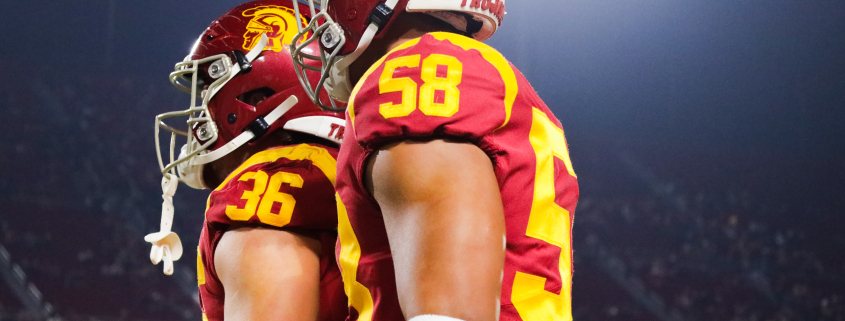Money Talks: How NIL will impact recruiting moving forward

Beginning July 1, student-athletes began making money from selling their name, image and likeness, more formally known as NIL. This trend came from various decisions made by state laws, federal courts and the NCAA finally allowing players to start earning from the sport they play at the collegiate level.
Clearly, this is great for student-athletes because they dedicate so much committment toward their sport, which also takes away from classes, other activities and even their own free time.
Even though critics still argue that student-athlete scholarships already act as a form of payment, that isn’t necessarily the case. Scholarships do not usually cover all of the student-athletes expenses and not every single person on the team is receiving full-tuition scholarships or even a scholarship in the first place.
Being able to sell their “brand” can allow student-athletes to have actual monetary gains from the work they put in daily.
However, what decides how much student-athletes get paid? From my perspective, two major stakeholders are going to pay these student-athletes — major national companies or the local businesses close to the university.
Obviously, the big-time highly-recruited players are going to be the ones mainly getting major deals with big companies, similar to the stars in professional sports. An example of this can be seen in USC football freshman cornerback Ceyair Wright, who starred in “Space Jam: A New Legacy” alongside LeBron James, who signed a deal with Overtime, a national sports network.
Others who are not a big name player and/or not at a major university for their sport will likely pursue deals with more local businesses because they are more popular near their college compared to the whole nation.
An example of this is Iowa basketball player Jordan Bohannon, who made an NIL deal with a local company in the state, Boomin Iowa Fireworks. The offensive line at Arkansas partnered with a local barbeque restaurant.
Colleges located in areas with businesses that have a lot of money for marketing will be appealing to athletes. This leads to my point that location is going to matter much more when it comes to recruiting, so these student-athletes can get much better deals and opportunities for financial compensation.
Let’s take USC for example, located in one of the largest cities in the country — Los Angeles — with a vibrant array of businesses that want to partner with athletes. Compared to colleges with more traditional settings, such as a small suburban or rural community with not many businesses around, the preference of the student-athlete likely gets more swayed toward USC, even if we might not be better than the other college at whatever sport the athlete plays.
Still, student-athletes would still be persuaded to go to the current major powerhouses such as Alabama or Clemson for football, even though they are not located in areas as economically fruitful as L.A.
This is because national brands know the quality of players at such schools, so these companies will put a higher priority on players at these schools. Essentially, it is somewhat like a positive feedback loop where players continue to go to the powerhouse schools regardless of their location.
Then, student-athletes who stick to traditional powerhouses in small markets are likely to get a major national deal and companies will continue to give such NIL deals because they know the high quality and popularity of players going there.
Right now, since these NIL decisions happened recently, it is somewhat like the Wild West with limited rules or regulations. I do expect there will be some provisions in the future determining how student-athletes can be compensated and what types of companies they can partner with.
Regardless, it is imperative USC takes action with these recent changes because its location and brand will attract a lot of businesses to sign deals with its athletes.
Moreover, with the amount of sports merchandise USC sells throughout the nation, recruits will want to have a portion of the profits. The University is already taking the right steps to build on its student-athletes’ brand, including the football team is partnership with the creative agency J1S to create BLVD Studios to boost its players’ profitability and market value.
NIL deals could have a major impact on recruiting for schools such as USC who are located in major media markets and highly-populated cities, and these transactions can improve their success on the field in due time.
Pratik Thakur is a junior writing about business in the world of college sports for the Daily Trojan. His column, “Money Talks,” runs every other Wednesday. He is also an assistant sports editor.

